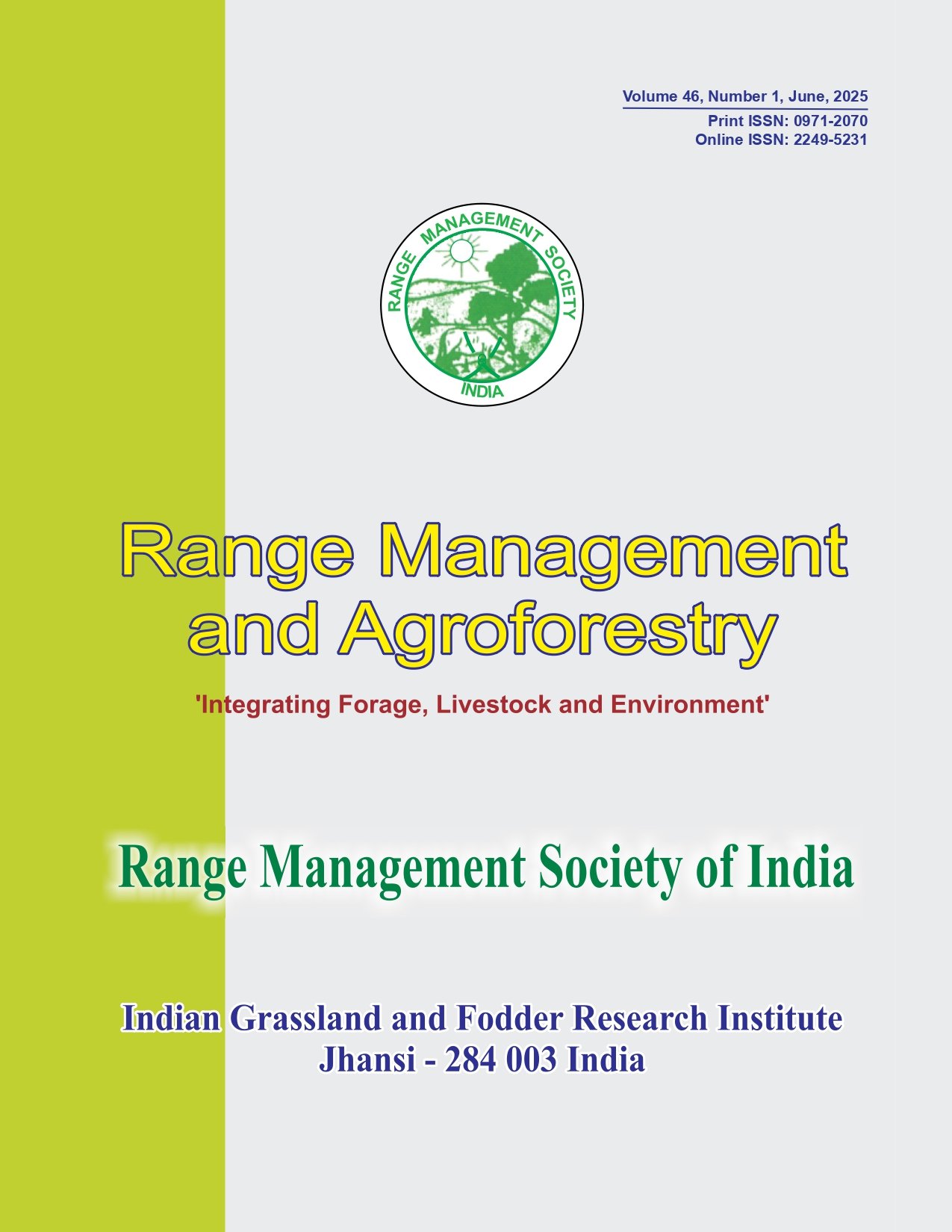Performance of Guinea grass (Panicum maximum) as influenced by row proportion under different tree species in north-eastern hilly region of India
Keywords:
Fodder, Guinea grass, Intercropping, Michelia oblonga, Morus alba, Panicum maximum, Parkia roxburghi, Row proportions, Shade, Soil moisture, Solar radiation transmission, Terminalia myriocarpaAbstract
Growth and yield performance of Guinea grass (Panicum maximum) was compared under different row proportions and four tree species predominantly found in North Eastern Region. The growth and yield were higher with Morus alba followed by Terminalia myriocarpa. Plant height increased with increasing row proportions, whereas, number of tillers/plant, clump circumference, leaf length and leaf width were significantly decreased. Plant height, clump circumference and number of leaves/plant were significantly (P<0.05) higher in three row proportions. Guinea grass harvested under Morus alba showed higher fodder yield (34.7%), actual fodder sticks (50.0%) and above ground biomass (38.6%) than other tree species. Similarly, three row proportions had 120.5, 149.4 and 127.9% respectively higher yield than one row. Correspondingly, Morus alba had higher soil moisture during both the season, but Michelia oblonga registered higher solar radiation transmission.




